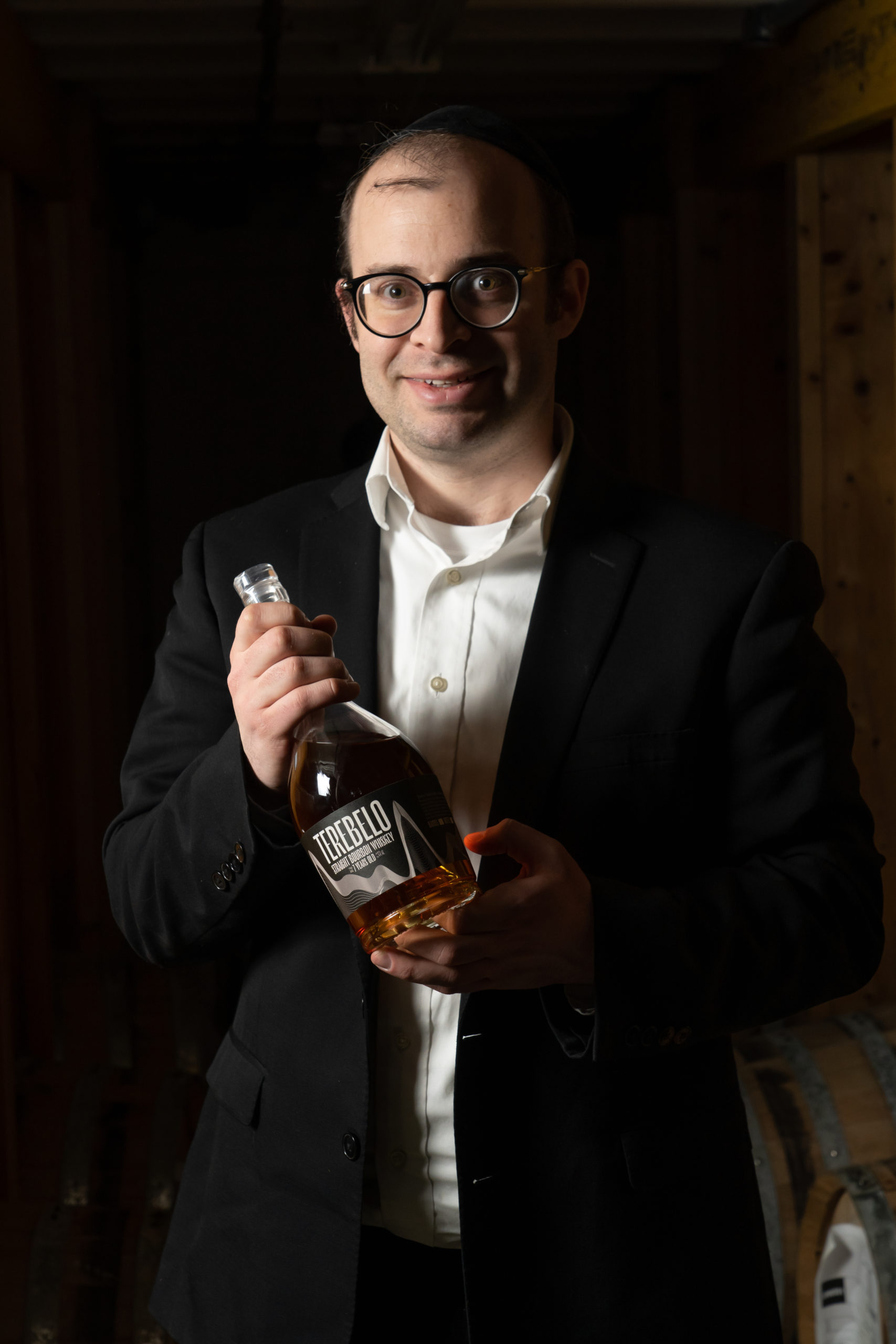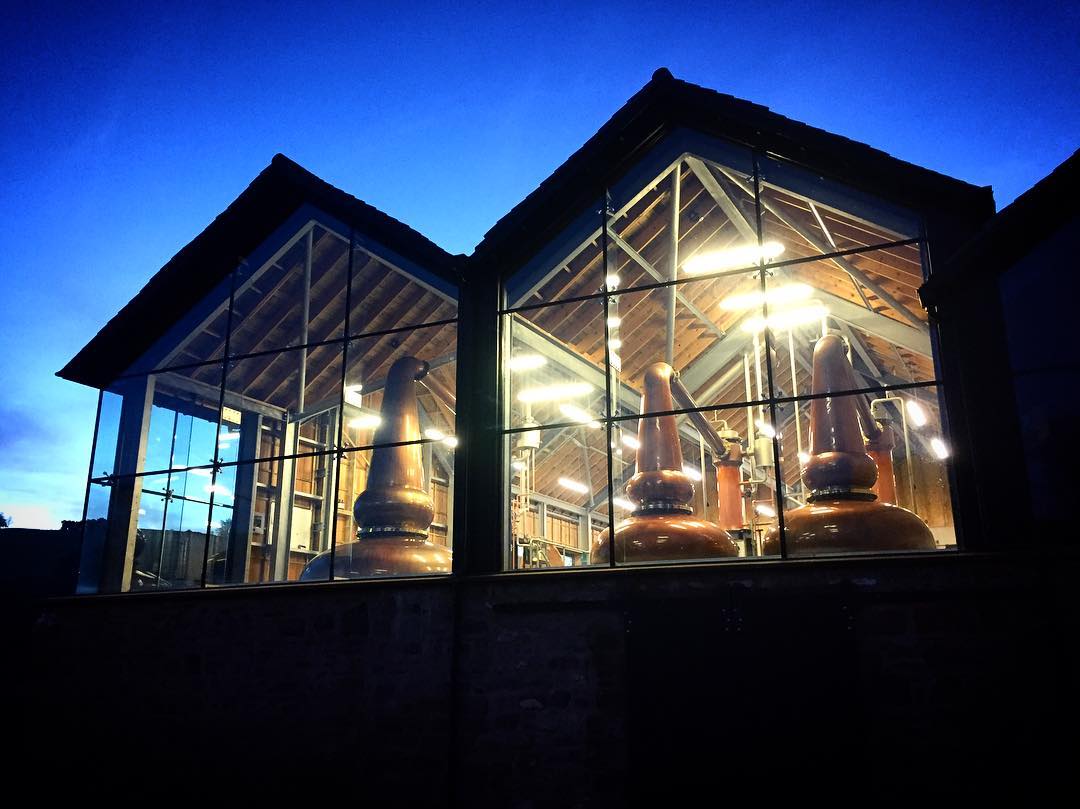Lindores Abbey Distillery
The History Of Alcohol
As the amber liquid swirls in your glass and you take the first warming sip, feeling the fire spread down your throat and filling your veins, do you ever stop to think about where it all began? Not the process of easing open the cork with a squeak and pouring yourself a dram, but the story of whisky itself.
Or should that be Aqua Vitae? This term, translated from the Latin for Water of Life, dates back to Roman times and was used to describe anything from holy baptismal waters to distilled tinctures. The term eventually came to specifically describe alcohol, and as people’s thirst grew, its popularity spread. News of Aqua Vitae reached Scottish shores, and the Gaelic term uisge beatha was born, giving us the modern word ‘whisky’.
While the alchemists of yore would happily distill anything they could get their hands on – including human blood – the Scots, particularly monks, decided to make use of the abundant natural ingredients they had and stuck largely to barley. The resulting distilled malt liquid was used for everything, and the list of its purported effects was endless. It was thought to ‘sloeth age, abandoneth melancholy, keep the stomacke from wambling and the teeth from chatteryng.’ High praise indeed!
But taste was not initially top of the agenda. Aqua Vitae was a medicine and antiseptic above all, however the monks’ experimental nature got the better of them. They began to make use of the herbs growing in abbey gardens to infuse the aqua vitae with more palatable flavors, and this proto-whisky became the drink of choice for kings and commoners alike.
Lindores Abbey Distillery Is Born
King James IV in particular had a strong thirst for the stuff. In fact, the first ever written record of Scotch whisky production is a command from King James IV to Friar John Cor of Lindores Abbey. The Exchequer Roll of 1494 reads: “To Brother John Cor, 8 bolls of malt, wherewith to make aqua vitae for the King.” 8 bolls of malt would be enough to make approximately 400 bottles of whisky, so production was clearly continuing apace at Lindores Abbey.
Today, a mere 526 years after the King’s order, whisky is once again flowing at its spiritual home. Lindores Abbey Distillery, situated outside Newburgh, Fife, opened in 2017 following years of work by the Abbey’s custodians, Drew and Helen McKenzie Smith. The distillery is a glass-fronted temple to whisky, with soaring copper stills and complicated distilling machinery buzzing away.
But where there now stands gleaming metal there once were pigs, horses, and children tearing around on bikes. For many years a working farm, the steading lies opposite the childhood home of the McKenzie Smith family and their Howison ancestors for a century before them. The remains of the abbey in the garden served generations as the perfect location for games of hide and seek, with little heed paid to the structure’s rich history.
Drew’s curiosity finally got the better of him, and he undertook some initial research in to ‘the abbey in the garden.’ What he uncovered was a fascinating, turbulent history of kings, queens, knights and battles. Edward I, David II, James IV and William Wallace all passed through the ancient site, with the latter declaring of the Lindores water ‘that the wine in France I ne’er thought half so good.’
The Abbey
The Abbey, founded in 1191 by David Earl of Huntingdon, was perfectly positioned for working life. The land was given to the Earl by his brother King William I, and sits on the banks of the Tay, surrounded by plentiful supplies of timber and stone. The Abbey was part of the Tironensian order, with the mother abbey located at Tiron, near Paris. Tironensians prided themselves on their work ethic, and were known as master craftsmen, educators, cultivators and traders. Unlike many other religious orders, the Tironensian monks believed that hard physical work cleansed the soul, and they threw themselves into agricultural labour and cultivation with alacrity.
Lindores thrived, with the monks trading Tay salmon, wool, and fruit for money, tapestries and silks as far away as Flanders. The Abbey owned property across England and Scotland, and amassed great wealth during the Crusades by praying for the soldiers’ souls in exchange for donations.
Unfortunately, the peaceful and productive lives of the Lindores monks were cut short by rabble-rousing John Knox in the 16th century. While Scotland was wracked by political and religious unrest, the beautiful sandstone abbey was twice besieged and overthrown by Reformers. On 23rd June 1559, Knox recorded: ‘In the whilk of the abbay of Lindores, we reformed: their alters overthrew we, their idols and mass books we burnt in their presence, and commanded them to cask away their monkish habits.’
The Abbey was dismantled – its fine clock was purchased by Edinburgh Town Council – and by the 17th century it was being used as a quarry, with its slate and stone being used in the construction of houses in Newburgh, many of which still stand today.
The Abbey – or simply ‘the ruins’ as they are locally known led a gentler life for many years, acting as grazing for farm animals and welcoming occasional whisky enthusiasts.
The Distillery Is Born
In 2001, there was a knock on the door from a gentleman in a crumpled linen suit who asked to look around the ruins. Kenneth, Drew’s father and the former custodian of the ruins, was happy to let him explore and thought little more of it until several months later, a beautiful copy of Scotland and its Whiskies appeared in the post with a note from the author, respected whisky writer Michael Jackson, to turn to page 127.
‘For the whisky lover, it is a pilgrimage,’ it read. These eight simple words cemented Lindores Abbey as the spiritual home of Scotch whisky and explained its primordial role in our national drink.
Seizing upon the exciting revelation, Drew and Helen began campaigning, researching, planning and pitching to raise the funds to preserve the rich history of Lindores and create a distillery. A fortunate introduction via the team at the Fife Business Gateway led to a flourishing business partnership with international investors with a passion for whisky and an appreciation for the unique opportunity presented by Lindores.
It has been a tantalising wait for the whisky to come of age since the first casks were filled in 2017. In December, the spirit will finally reach its 3rd birthday and the distillery can turn its thoughts to bottling – but only if the time feels right. After all, Lindores has been waiting to welcome whisky back to its spiritual home for more than 5 centuries, so what’s a few months longer in the pursuit of perfection?
Stay tuned articles on this one of a kind distillery we will be putting up a picture gallery so you can visit virtually and of course stay tuned for their bottle release!

I love hearing from you about why you love something I wrote or published or a recipe I don’t know. I am Master Distiller at Terebelo Distillery, Love all things alcohol. Freelance for Grogmag and blog recipes for buildthebottle.com Weekend Rabbi too.



Customer Reviews
Thanks for submitting your comment!